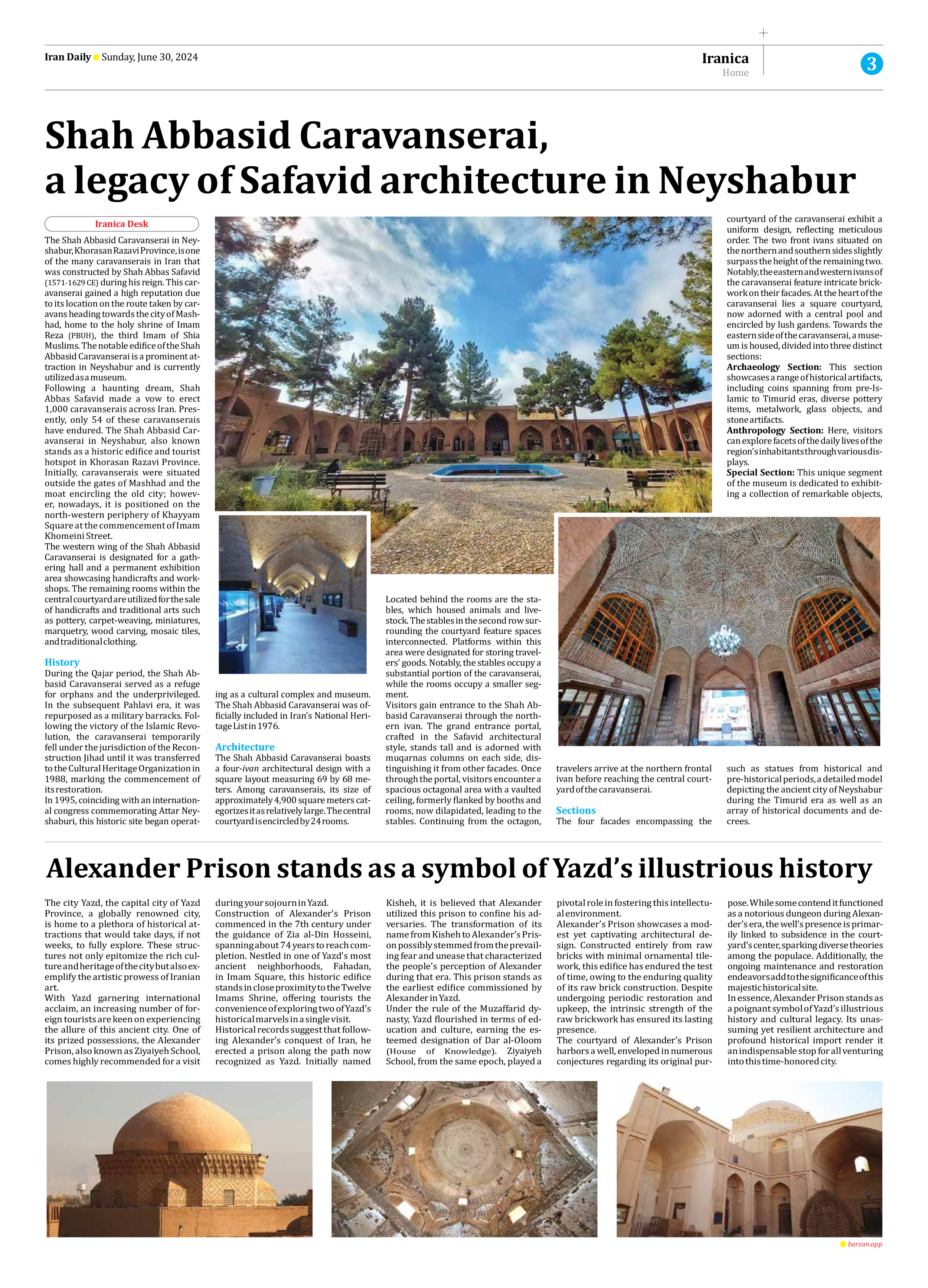
Alexander Prison stands as a symbol of Yazd’s illustrious history
The city Yazd, the capital city of Yazd Province, a globally renowned city, is home to a plethora of historical attractions that would take days, if not weeks, to fully explore. These structures not only epitomize the rich culture and heritage of the city but also exemplify the artistic prowess of Iranian art.
With Yazd garnering international acclaim, an increasing number of foreign tourists are keen on experiencing the allure of this ancient city. One of its prized possessions, the Alexander Prison, also known as Ziyaiyeh School, comes highly recommended for a visit during your sojourn in Yazd.
Construction of Alexander’s Prison commenced in the 7th century under the guidance of Zia al-Din Hosseini, spanning about 74 years to reach completion. Nestled in one of Yazd’s most ancient neighborhoods, Fahadan, in Imam Square, this historic edifice stands in close proximity to the Twelve Imams Shrine, offering tourists the convenience of exploring two of Yazd’s historical marvels in a single visit.
Historical records suggest that following Alexander’s conquest of Iran, he erected a prison along the path now recognized as Yazd. Initially named Kisheh, it is believed that Alexander utilized this prison to confine his adversaries. The transformation of its name from Kisheh to Alexander’s Prison possibly stemmed from the prevailing fear and unease that characterized the people’s perception of Alexander during that era. This prison stands as the earliest edifice commissioned by Alexander in Yazd.
Under the rule of the Muzaffarid dynasty, Yazd flourished in terms of education and culture, earning the esteemed designation of Dar al-Oloom (House of Knowledge). Ziyaiyeh School, from the same epoch, played a pivotal role in fostering this intellectual environment.
Alexander’s Prison showcases a modest yet captivating architectural design. Constructed entirely from raw bricks with minimal ornamental tilework, this edifice has endured the test of time, owing to the enduring quality of its raw brick construction. Despite undergoing periodic restoration and upkeep, the intrinsic strength of the raw brickwork has ensured its lasting presence.
The courtyard of Alexander’s Prison harbors a well, enveloped in numerous conjectures regarding its original purpose. While some contend it functioned as a notorious dungeon during Alexander’s era, the well’s presence is primarily linked to subsidence in the courtyard’s center, sparking diverse theories among the populace. Additionally, the ongoing maintenance and restoration endeavors add to the significance of this majestic historical site.
In essence, Alexander Prison stands as a poignant symbol of Yazd’s illustrious history and cultural legacy. Its unassuming yet resilient architecture and profound historical import render it an indispensable stop for all venturing into this time-honored city.







